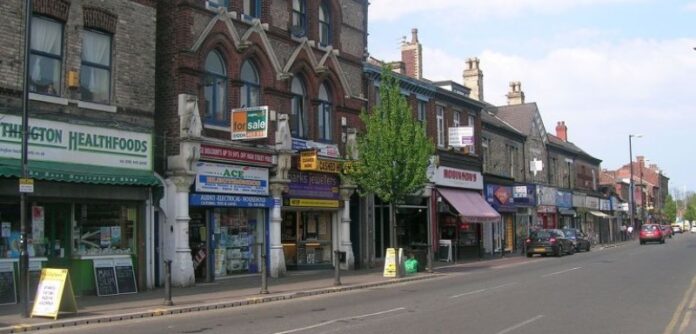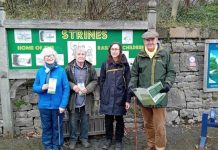Neighbourhood shopping districts and local high streets will only meet the needs of a post-coronavirus society through the development of local strategies and better collaboration between businesses, councils and community groups, according to university research.
District centres across the UK require extra support to become more than just places for convenience shopping and small businesses in order to better serve their local communities, say researchers at Manchester Metropolitan University’s Institute of Place Management (IPM).
While much focus and investment has been concentrated on revitalising large city centre areas and retail destinations, researchers say the role and function of smaller district centres must be considered in the UK’s recovery planning,
District centres, defined as a small group of shops separate from a large town or city centre, experienced far less decline in footfall during lockdown compared to major towns and city centres as people have adapted their behaviour, travelled less widely and rediscovered shops and services on their doorstep.
Lockdown emphasised how neighbourhood high streets are vital for residents who rely on walking to their nearest district centre for everyday essentials and groceries.
But researchers found that a lack of strategic direction and understanding of what people want from their high street has led many decision-makers to assume they are not important.
Dr Steve Millington, Reader in Place Management at Manchester Metropolitan University, said: “While thriving district centres can be seen across London, providing a wide range of services with good transport connections, outside the capital city many communities are underserved by their local centres.
“With the closure of local pubs, withdrawal of multiple retailers from many high streets, and the challenges now facing restaurant chains, simple activities such as going for a family meal, or to relax over a drink with friends, entails travelling elsewhere.
“This inequality is amplified by the 10 million people in England and Wales who lack access to basic items such as fresh food within walking distance of their homes.
“With many predictions about our ‘new normal’ society seeing a large increase in people working from home, we need to think more seriously about the potential for district centres to become destinations and places that can support their local communities.”
With the government’s commitment to promoting the health and environmental benefits of reduced commuter traffic, as well as the benefits of walking and cycling, researchers are calling for new policies backed by a collaborative group of local stakeholders to strengthen centres close to people’s homes and embed the ties to local areas developed during lockdown.
Researchers at the IPM, an international professional body that supports people committed to developing, managing and making places better, have already been working with Manchester City Council since 2017 to deliver a programme on ‘Vital and Viable’ places, focussing on five local communities in Chorlton, Gorton, Harpurhey, Northenden and Withington.
Drawing on initial performance assessments of each district centre by IPM researchers, alongside consultations with local stakeholders and a report of recommendations, the project is designed to inform policy decisions about the future of each area.
The wider Greater Manchester area is home to 70 smaller but still significant local and suburban centres, with IPM research suggesting each one accommodates an average of around 150 businesses, although the largest have more than 300.
Dr Millington said: “While the number of businesses in these areas seems small when compared to large city and town centres, collectively they make a significant contribution to the local economy and will play a major role in the coronavirus recovery.
“Our research shows that district centres, just as any other type of centre, need to steer away from a singular focus on retail, to emerge as multi-functional places supporting leisure and recreation, employment, tourism, heritage, culture, housing, employment, education, health and wellbeing, as well as retail, while being prepared to meet future economic challenges.
“There is a clear requirement for centres to adapt to ensure that they meet this challenge, and for policy and decision makers at a national and local level to give greater consideration of how they can support such a transformation.”







